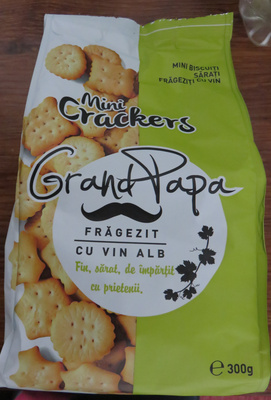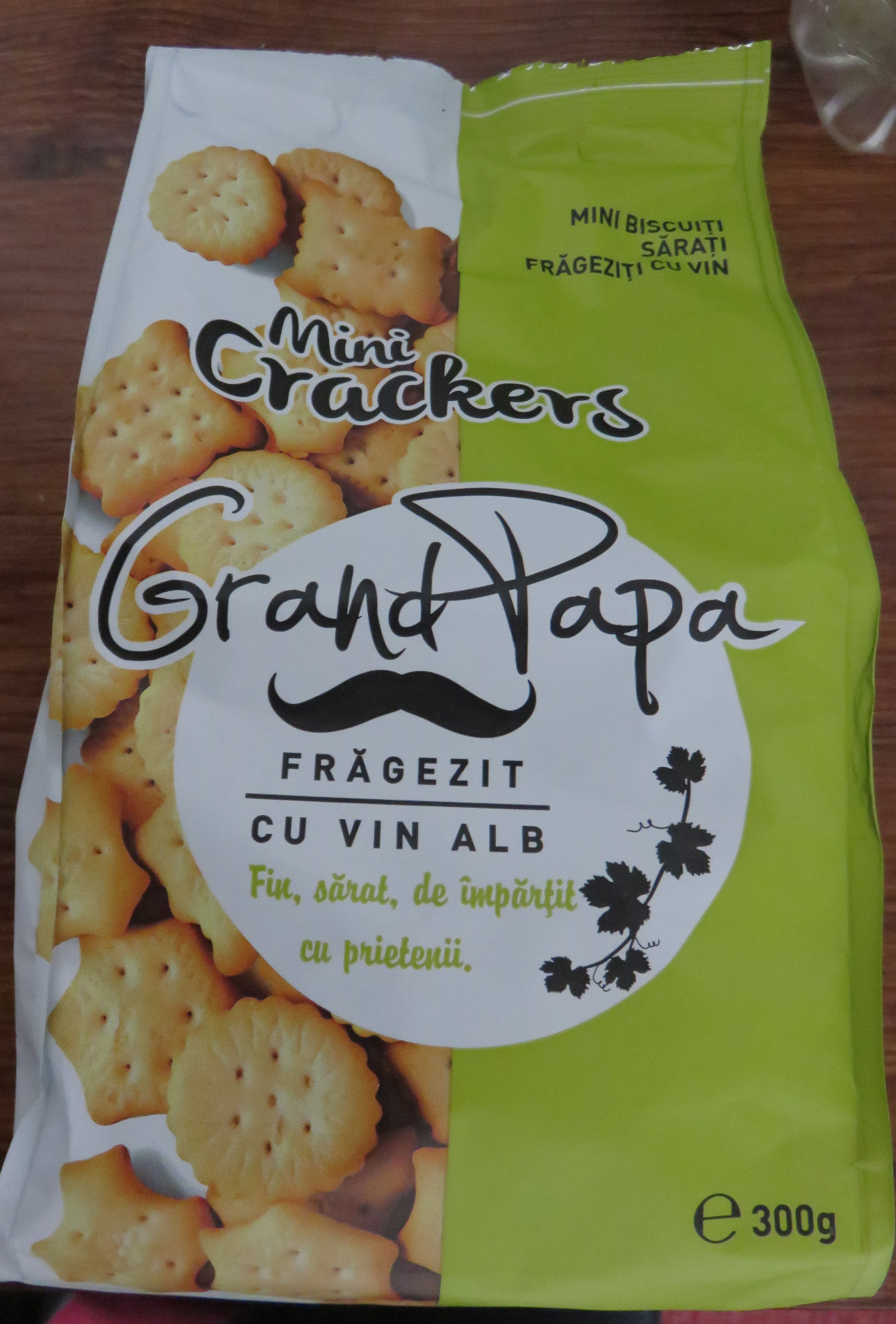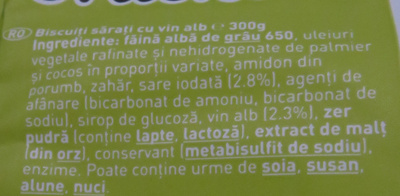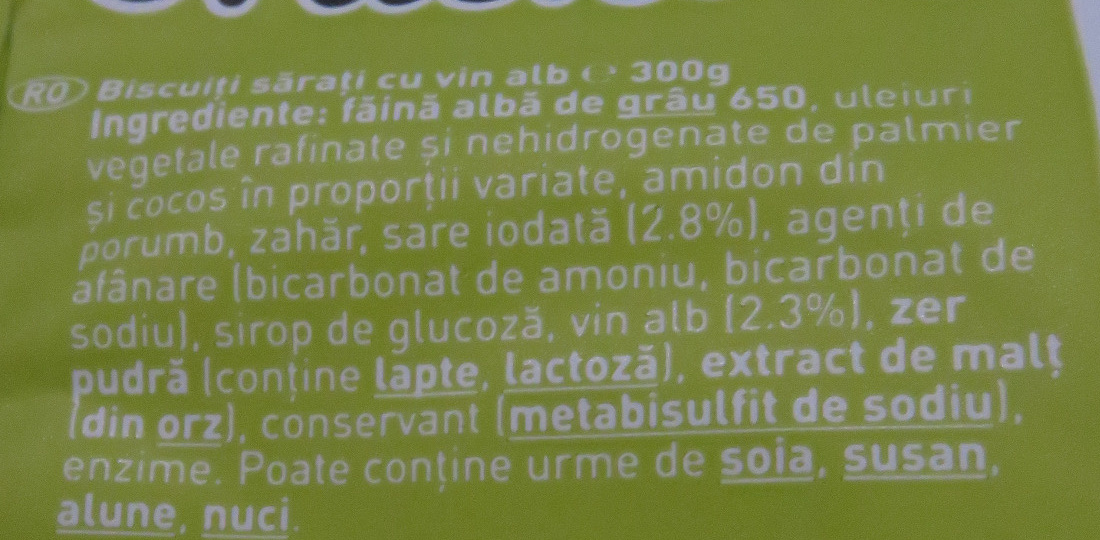Mini crackers Grand Papa frăgezit cu vin alb - 300g
This product page is not complete. You can help to complete it by editing it and adding more data from the photos we have, or by taking more photos using the app for Android or iPhone/iPad. Thank you!
×
Barcode: 5941143021963 (EAN / EAN-13)
Common name: Mini biscuiți sărați frăgeziți cu vin alb
Quantity: 300g
Brands: Grand Papa
Categories: Snacks, Salty snacks, Appetizers, Crackers
Countries where sold: Romania






